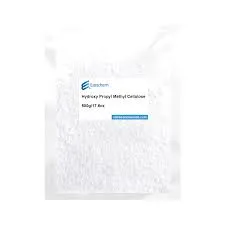
ئیلول . 01, 2024 04:41 Back to list
Hydroxypropyl Methylcellulose Uses in Tablets - Benefits, Applications, and Formulation
Hydroxypropyl Methylcellulose (HPMC) is a synthetic polymer derived from cellulose, a natural polymer found in the cell walls of plants. This versatile compound has gained significant attention in the pharmaceutical industry, particularly in the formulation of tablets. HPMC serves multiple functions, making it an essential excipient in the production of various dosage forms.
One of the primary uses of HPMC in tablet formulation is as a binder. In tablet manufacturing, binders play a crucial role in holding the ingredients together and ensuring the structural integrity of the tablet. HPMC's ability to form strong, cohesive gels when mixed with water provides the necessary adhesion that helps maintain the tablet's shape during handling and transportation. This property ensures that tablets remain intact, reducing the risk of breakage and improving their shelf life.
Hydroxypropyl Methylcellulose (HPMC) is a synthetic polymer derived from cellulose, a natural polymer found in the cell walls of plants. This versatile compound has gained significant attention in the pharmaceutical industry, particularly in the formulation of tablets. HPMC serves multiple functions, making it an essential excipient in the production of various dosage forms.
Another notable advantage of HPMC is its excellent film-forming capabilities. This property allows it to be used in film-coated tablets, providing a protective layer that enhances the tablet's appearance, taste, and stability. The film coating can also prevent moisture from entering the tablet, thus preserving the potency of the active ingredients. Additionally, HPMC-based coatings can help mask unpleasant tastes, making medications more palatable, particularly for pediatric or geriatric patients.
hydroxypropyl methylcellulose uses in tablets

In addition to its binding and film-forming functions, HPMC can also serve as a thickening agent in formulations. This characteristic is particularly useful in the development of suspensions and gels, where a desirable viscosity is required. By controlling the viscosity, HPMC can help ensure uniform distribution of active ingredients, thereby enhancing the effectiveness of the medication.
The use of HPMC in tablet formulations is not only limited to its functional properties; it is also favored for its safety profile. HPMC is considered non-toxic and is generally regarded as safe (GRAS) by regulatory authorities. This makes it an attractive choice for formulators, particularly when involving sensitive populations such as children, the elderly, or those with allergies to other excipients.
In conclusion, Hydroxypropyl Methylcellulose (HPMC) is a multifaceted excipient that plays a vital role in the formulation of tablets. Its functions as a binder, controlled-release agent, film former, and thickening agent contribute significantly to the overall performance and stability of pharmaceutical products. Given its safety and efficacy, HPMC continues to be a popular choice in the pharmaceutical industry, supporting the development of effective and patient-friendly medication. As research and technology advance, the applications of HPMC in tablet formulations are likely to expand, further enhancing its value in modern medicine.
-
Versatile Hpmc Uses in Different Industries
NewsJun.19,2025
-
Redispersible Powder's Role in Enhancing Durability of Construction Products
NewsJun.19,2025
-
Hydroxyethyl Cellulose Applications Driving Green Industrial Processes
NewsJun.19,2025
-
Exploring Different Redispersible Polymer Powder
NewsJun.19,2025
-
Choosing the Right Mortar Bonding Agent
NewsJun.19,2025
-
Applications and Significance of China Hpmc in Modern Industries
NewsJun.19,2025







